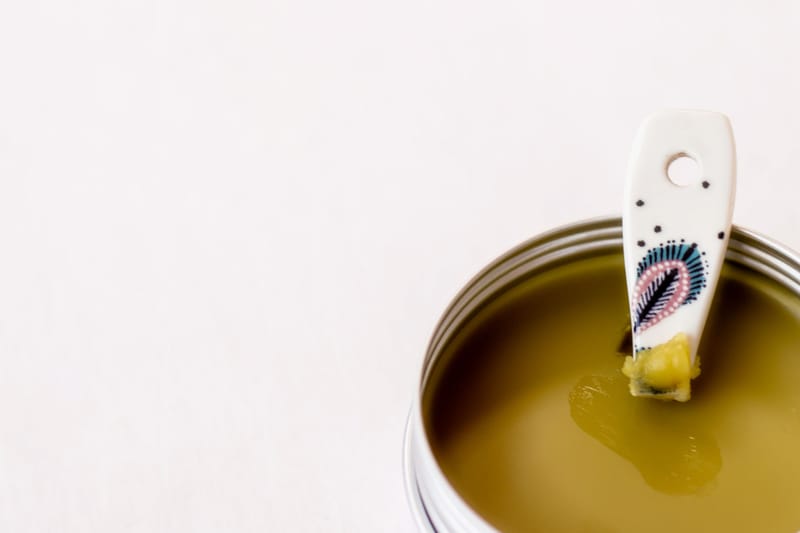Salves are increasing in popularity. Many people ask us the difference between a balm, a lotion, and a salve. Lotions are the sofest and thinnest of the three. They are designed to absorb completely into the skin. A balm and a salve are often used interchangeably as they are both comprised of manly oils and beeswax and leave a light protective layer on the surface of the skin. A balm tends to be harder and thicker than salves. This allows the balm to penetrate deeper into the skin. Salves are softer and are better suited on minor, surface skin irritations.
There are five major uses for salves. First and foremost they are used on extremely dry skin. This can increase in severity due to cold weather, hard water, and living in an area with low humidity. Secondly, salves can reduce scarring and itching on a healing wound. Please note, that salves should only be used on closed wounds or minor burns. Salves can also be used to relieve skin conditions caused by eczema, psoriasis, dermatitis, fungal infections, and healing tattoos. In addition, salves can be used effectively on dehydrated skin. This includes dullness, tightness, and scaliness. Lastly, salves can be helpful on cracked heels and elbows, torn cuticles, and chapped lips.
Salves are mainly comprised of oils and beeswax. Each oil is carefully chosen for its' healing properties. Many of our salves have oils that have been infused with sustainably harvested dried herbs. For example, oils infused with Calendula are said to improve blood flow to the surface of the skin. This can help with cell regeneration.

